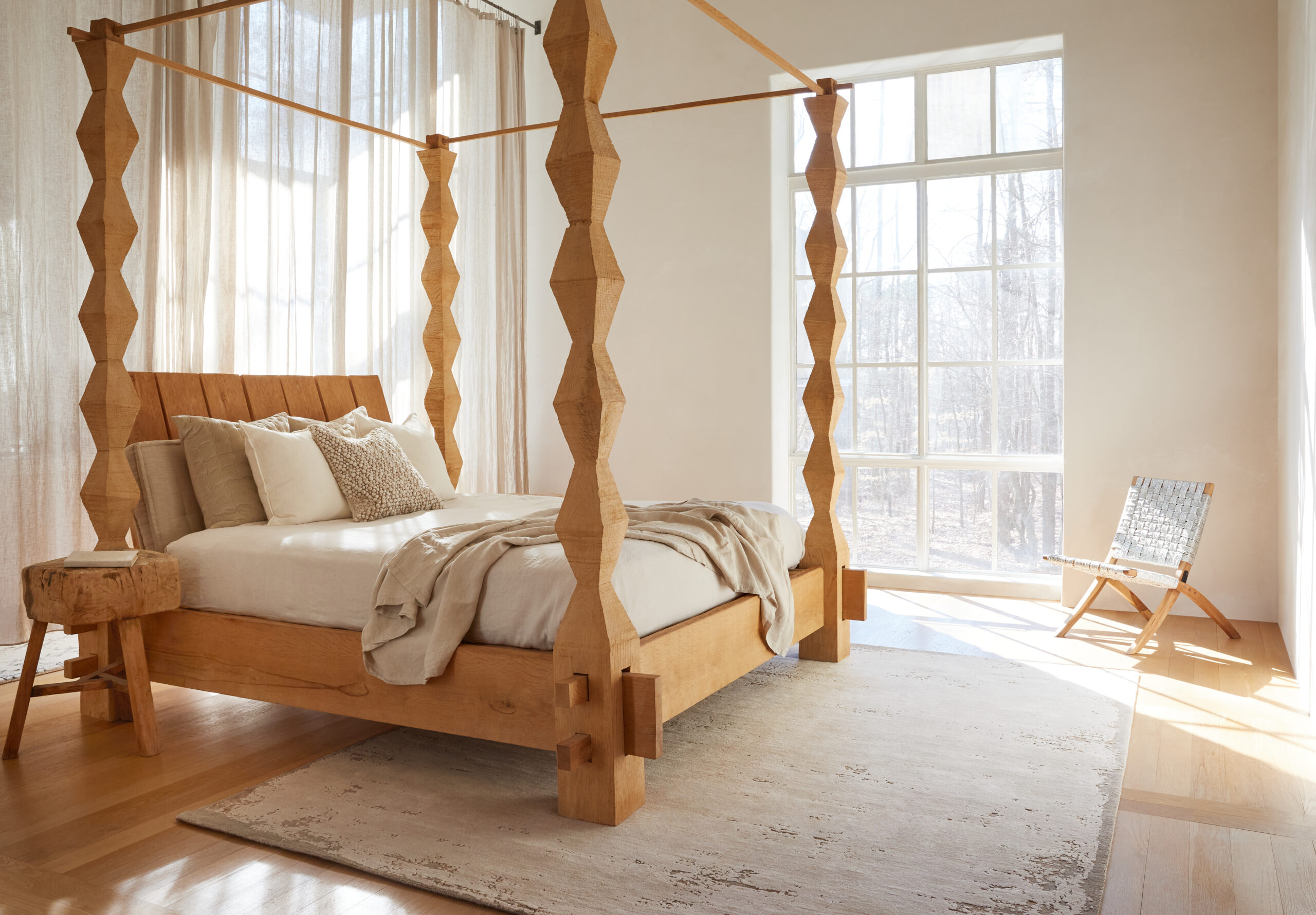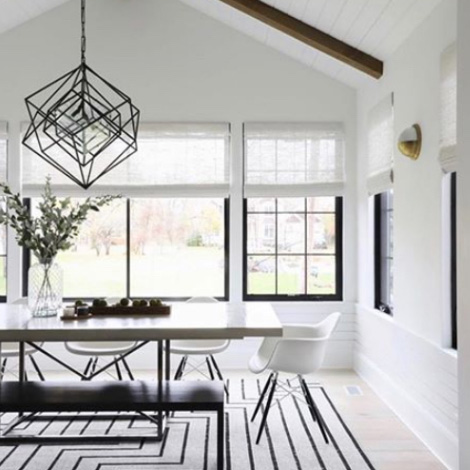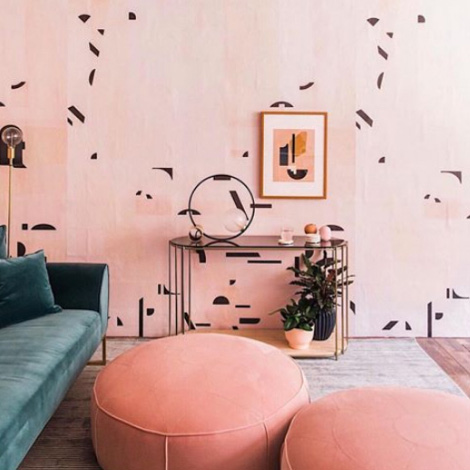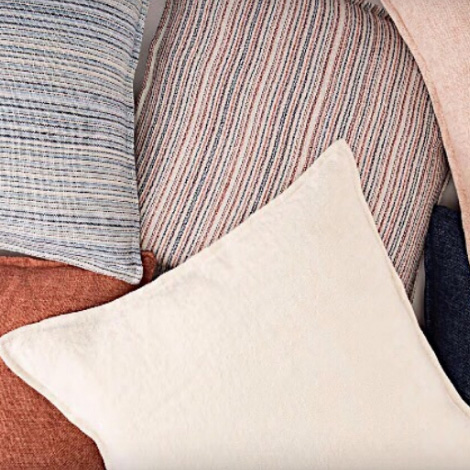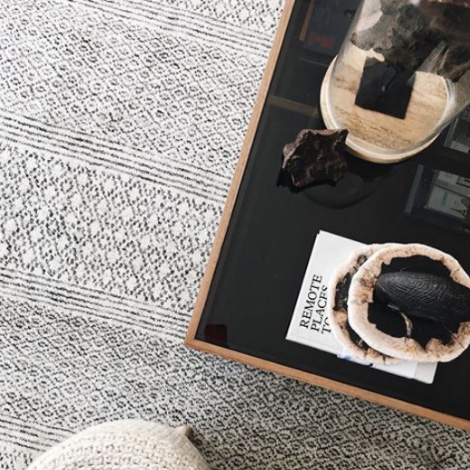There’s a certain atmosphere—you can just feel it—when you walk into a room that’s been professionally designed and decorated. Maybe you can’t quite put your finger on it… is it the way the shelves are styled? The scale of the furniture? The beautiful finishings? (Yes!) Most likely, though, what sets most well-appointed rooms apart is attention to detail through customization. Customization is a designer’s best friend, allowing them to truly tailor a room to a client’s lifestyle and wants. Here’s what two designers think about how important customized pieces are.
Insider tip: Jaipur Living offers custom shapes and sizes in over 600 of its rugs. Its custom calculator and instant quotes make the process a designer’s dream.
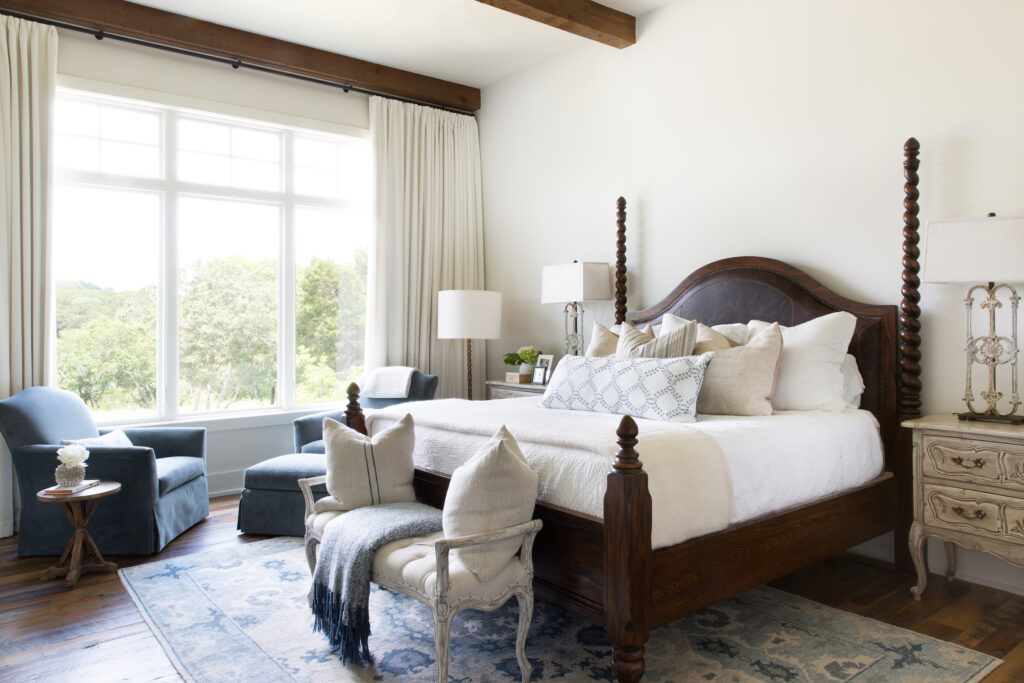
Interior designer Blair Burton used the bestselling and customizable Kai collection in this bedroom. Photo by Molly Culver Photography
Good Design Depends on Customization
One of the pros to custom design is the ability to create one-of-a-kind spaces according to Laura Torbert of Laura Torbert Interiors. “Our goal for all our clients is to create a space that feels uniquely theirs,” she says, noting that it’s important to her firm that there are intentional, detailed, and individual qualities in each home to reflect the homeowners and their lifestyles. “It’s all possible with customization,” she adds. “Each nook and cranny is accounted for and planned so that every element fits together like a puzzle.” For Torbert, the benefits of customization include the ability to manipulate scale, form, function, and style to an exact vision.
Designer Blair Burton of Blair Burton Interiors adds that the chance to select color, size, and pattern is crucial to making a home exactly how her clients want them. “Size is especially important in big Texas homes,” she notes. “Sometimes a 10 x 14 rug isn’t big enough or you might need a square shape.”
See also: 20 Customization Questions, Answered
Torbert notes that sometimes people who don’t work with designers might not know that upholstery can be fully customized—from the filling and the legs to the shape and configuration. “The options are limitless,” she says, “including using your own textiles, creating new dimensions, and adding skirts and other upholstery details like scalloped edges or contrasting piping.”
Both designers say that lead times and costs associated with customization are often seen as a downside, but both say that the pros greatly outweigh any of these consequences.
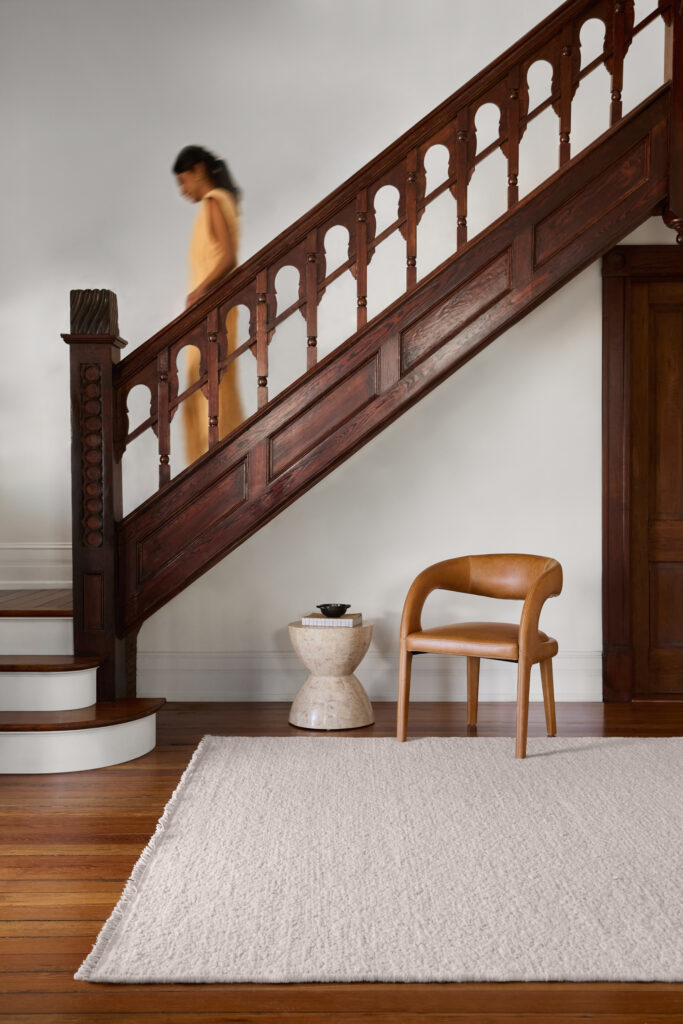
Jaipur Living‘s Aldea collection is part of the exclusive Designer Edit program.
No Limits
When dealing with high-end design, nearly everything is customizable. Even paint colors can be customized. Burton frequently commissions custom artwork for clients and does a lot of business in custom beds. She even points out that the cost of large beds from big box stores are not that much of a savings as compared to custom. “By the time you get a $4,000 bed from a big-box store, you might as well order something custom where you can specify it exactly to your mattress, add nailheads, and favorite fabrics, for example,” she says. She is also a fan of customized wallpaper when the opportunity arises.
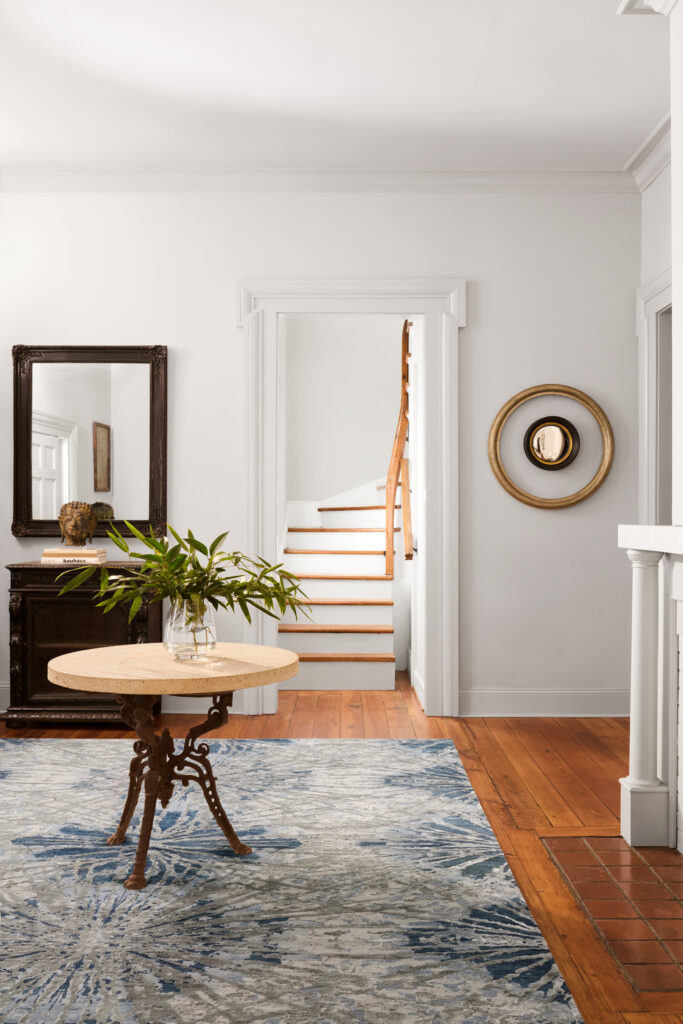
The Chaos Theory collection by Kavi is available in custom shapes and sizes.
Cut a Rug
One important item to customize to get a true, made-for-this-house look rugs. According to Torbert, “Rugs are one of the most customized and customizable items in our designs. The size of a rug is the most important customization that can be done.” She suggests that the bigger the rug, the larger the room feels, which might be counterintuitive to any nonprofessionals. Torbert takes her area rugs to within three inches of the walls to give that harmonious feeling. “We customize around obstacles like fireplace hearths, air vents, and odd corners to ensure we make spaces feel as spacious as possible,” she says. In addition to bespoke sizes, Jaipur Living also offers the additional customizations upon request that are common in luxury homes—think floor sockets, stair runners, and more.
Burton agrees that size is the biggest factor in rug customization. “People don’t often think about rearranging a pattern to better suit their style, such as removing a center medallion or changing a repeat to make a pattern more intense.” She likes to switch things up with fringe where there might not have been some or changing the fiber content to suit a lifestyle and budget. “Silk might be too precious for your living room or cost prohibitive, for example,” she says.
See also: 4 Can’t-Ignore Reasons To Invest In Home Decor
Color can also be considered. “Many times when designing spaces we are starting with a favorite piece of art or textile and customize the rug colors to coordinate,” says Torbert. “Customizing the color of a rug creates a completely unique result: works of art.” That even applies to vintage rugs as well as Jaipur Living‘s one-of-a-kind Manchaha program, which can be special commissioned to fit bespoke colorways and patterns. “Even when we use vintage rugs, we typically customize the size of a rug underneath,” Torbert notes.
Burton likes to remind clients that customization is an opportunity, not a burden. “This is your change to think outside the box and do something fun,” she says.
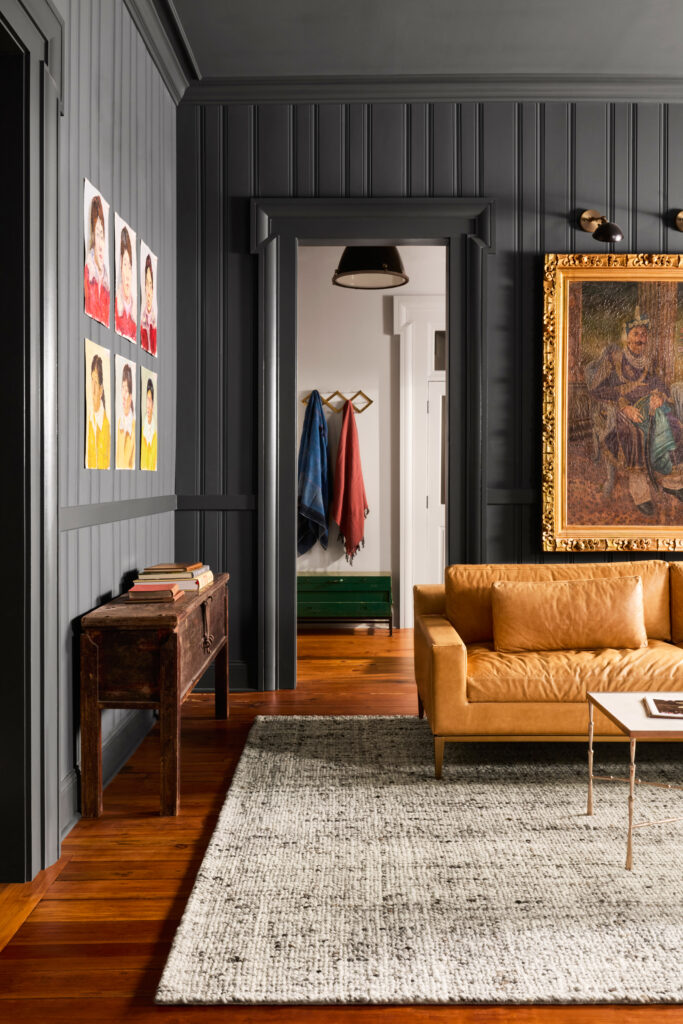
The bestselling Cambridge collection offers midcentury style to interior spaces.
Torbert’s Picks
1. “Merryn is a 100% wool subtle stripe that would be beautiful as a stair runner. The stripe creates some interest carrying your eye up and down the stairs, and the wool means it’s easy to spot clean.”
2. “Eden is a great example of how color and pattern can create so much interest in a space. Customizing the color poms to coordinate with textiles or art of a new design concept would marry this rug’s Old World charm with the New World feel of the space. It’s always fun to blend traditional patterns with a current color palette.”
3. “It would be fun to play around with the overall scale of the pattern on Natural Tobago as well as color combinations!”
Burton’s Picks
1. “I might add a border or use a lighter field color on Revolution.”
2. “It would be nice to see Orenda with a field patterned changed to make the pattern tigher.”
3. “Jinsen would be nice with a down-toned center diamond color.”


